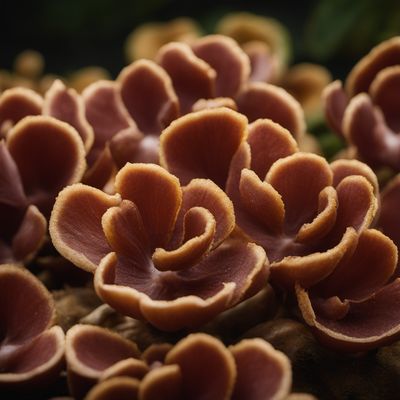
Ingredient
Shimeji
The Delicate Mushroom: Shimeji
Shimeji mushrooms are small and slender with a firm texture. They have a mild earthy flavor that intensifies when cooked, along with a slightly nutty taste. The mushrooms have a delicate and tender texture, making them a popular choice for stir-fries, soups, and noodle dishes. Shimeji mushrooms come in different varieties, including white, brown, and beech, each with its own subtle differences in taste and appearance.
Origins and history
Shimeji mushrooms have been cultivated and consumed in East Asia for centuries. They are native to Japan and have been an integral part of Japanese cuisine since ancient times. Shimeji mushrooms are also commonly used in Chinese and Korean cuisines. Traditionally, they were foraged from the wild, but now they are commercially grown and widely available. These mushrooms are highly regarded for their unique umami flavor and are often used in vegetarian and vegan dishes as a meat substitute.
Nutritional information
Shimeji mushrooms are low in calories and fat, making them a healthy addition to meals. They are a good source of dietary fiber, vitamins B and D, and minerals such as potassium and selenium. These mushrooms also contain antioxidants that help protect against cell damage.
Allergens
May cause allergic reactions in individuals sensitive to mushrooms.
How to select
When selecting shimeji mushrooms, look for firm and plump caps with tightly closed clusters. Avoid mushrooms with slimy or discolored caps, as this may indicate spoilage. The mushrooms should have a fresh and earthy aroma. If possible, choose organic or locally grown shimeji mushrooms for the best quality and flavor.
Storage recommendations
To maintain the freshness of shimeji mushrooms, store them in a paper bag or a loosely closed container in the refrigerator. Avoid washing the mushrooms until ready to use, as excess moisture can cause them to spoil quickly. Fresh shimeji mushrooms can be stored for up to one week, but it is best to consume them as soon as possible for optimal flavor and texture.
How to produce
Shimeji mushrooms can be cultivated at home using mushroom-growing kits or by following specific cultivation techniques. They require a cool and humid environment, making them suitable for indoor cultivation. The process involves inoculating a substrate, such as sawdust or straw, with shimeji mushroom spores and providing the right conditions for growth. With proper care and attention, home cultivation can yield fresh and flavorful shimeji mushrooms.
Preparation tips
Before using shimeji mushrooms, trim the base of the cluster and separate the individual mushrooms. They can be used whole or sliced, depending on the recipe. Shimeji mushrooms are versatile and can be sautéed, stir-fried, roasted, or added to soups, stews, and noodle dishes. They pair well with ingredients like garlic, ginger, soy sauce, and sesame oil. To enhance their flavor, cook them until they are slightly browned and tender. Avoid overcooking, as this can result in a mushy texture.
Substitutions
Oyster mushrooms can be used as a substitute for shimeji mushrooms, as they have a similar delicate texture and mild flavor. However, oyster mushrooms have a slightly different taste profile, so the overall flavor of the dish may vary. If shimeji mushrooms are not available, other mushrooms like cremini or button mushrooms can be used as a substitute, although they have a different texture and flavor.
Culinary uses
Shimeji mushrooms are commonly used in Asian cuisines, particularly in Japanese, Chinese, and Korean dishes. They are often stir-fried with vegetables, added to hot pots, or used in soups and noodle dishes. Shimeji mushrooms can also be used as a topping for rice bowls or incorporated into vegetarian and vegan recipes as a meat substitute. Their delicate flavor and texture make them a versatile ingredient in various culinary applications.
Availability
Shimeji mushrooms are widely available in Asian grocery stores and supermarkets. They can also be found in specialty stores that carry a wide range of mushrooms. Fresh shimeji mushrooms are more commonly available during the fall and winter seasons. However, they can be found year-round in dried or packaged forms.
More ingredients from this category » Browse all

Fusarium venenatum
The Fungal Protein: Fusarium Venenatum

Horse mushrooms
The Majestic Fungi of the Earth

Other cultivated fungi
Exquisite Edible Fungi

Snow mushrooms
The Delicate Beauties of the Forest

Enokitake
The Delicate Beauty of Enokitake Mushrooms

Jew's ears
Nature's Edible Fungi: Unveiling the Secrets of Jew's Ears

Pom-pom blancs
The Delicate Delight: Exploring the World of Pom-pom Blancs

Shiitake
The Mighty Shiitake

Pleurotus
The Versatile Oyster Mushroom

Wood blewits
The Enigmatic Wood Blewits: A Hidden Gem in the Culinary World

Paddy straw mushroom
The Golden Fungi

Common mushrooms
The Versatile Fungi

